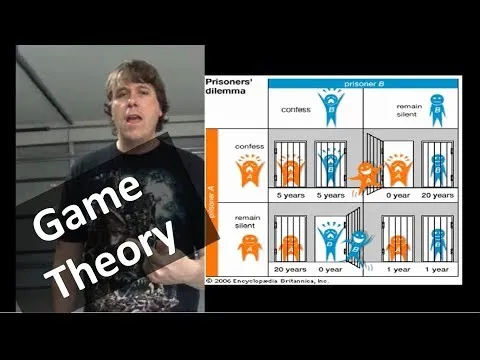Game Theory – Mixed Equilibrium looks at the Nash approach to game theory mixed equilibrium as well as an alternative approach to deriving a mixed equilibrium. Mixed equilibrium occurs when dominant strategies do not exist; see link below for ‘Game Theory – The Basics’, this video explains the ideas behind the use of dominant strategies.
The Nash approach to mixed equilibrium is mathematically correct but only logically explains mixed equilibrium in a static world; a world where the game is only played once and players take portions of each option. A more realistic approach to mixed equilibrium would be to assume the world is dynamic and that games repeat themselves. An example of a static equilibrium is when a person has one meal made up of several meals. The meal might be ¼ noodles, ¼ fruit, ¼ rice, and ¼ vegetable curry. An example of a dynamic equilibrium is having different meals each day rather than mixing all the meals into one combo meal.
The alternative approach looks at maximizing payoffs when the game is repeated. Players will focus on strategies that will deter other players from selecting options that are less beneficial to them. This approach often results in a long-term dominant strategy for at least one player. Using the Nash Equilibrium even bad outcome for both players have a probability of occurrence. This alternative approach through the creation of long-term dominant strategies prevents the worst outcome from being achieved.
The video can be watched at the link below:
Game Theory – The Basics is available at:
The Game Theory series is available at:

The official Spectrum Economics website can be accessed at: https://www.spectrumecons.com
For more exciting videos go to my YouTube channel at https://www.youtube.com/channel/UCILwyLtjl7ZTlYOqFkAwLzw
You can find me on LinkedIn at: https://www.linkedin.com/in/waynedavies-spectrumecons/
You can find me on Facebook at: https://www.facebook.com/SpectrumEconomics/
You can find me on Steemit at: https://steemit.com/@spectrumecons

